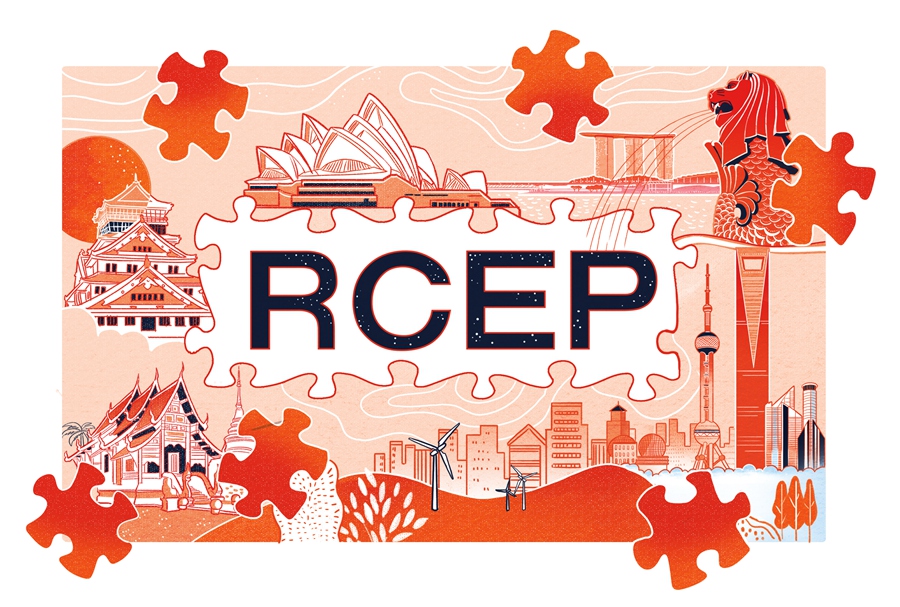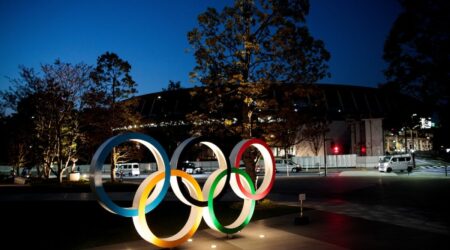China’s economic growth will slow down drastically in 2022, says IMF
By Subrata Majumder
Business tycoon Gautam Adani jeered at China’s global powerhouse, lamenting China was increasingly isolated, owing to protectionism and shift in the supply chain. Given these, the Regional Cooperation of Economic Partnership (RCEP), which is driven by China, is in a tailspin. Nearly one-third of China’s global trade is shared by RCEP. RCEP is the world’s biggest trade block. Eventually, the significance of RCEP is slipping into deceleration, with the Chinese economic miracle fading.
Critics echoed concern over RCEP’s frugality for trade expansion, as it was driven by China they feared China’s political influence through trade predominance. They lamented that China would have been the biggest beneficiary of the trade block in respect of larger market accessibility, after losing the USA market.
Battered by the Covid-19 pandemic, which led to a long period of lockdown of factories and shifting of foreign factories, China is losing the global powerhouse of workshops. In the run-up, RCEP is likely to lose its significance in global trade in the days to come, according to trade analysts.
According to IMF, China’s economic growth will slow down drastically in 2022. It was estimated to slip to 5.6 percent growth in 2022, from 8.1 percent in 2021. A similar forecast was made by the Chinese Academy of Science, which envisioned a 5.3 percent growth. Given the fact that China will continue its zero Covid-19 policy, which means a continuation of lockdown, closure of factories, and battered supply chain manufacturing, the Chinese economy will continue to dip in 2022. Chinese Communist Party politburo feels that even the targeted slow growth will be a difficult task.
The launching of the Indo-Pacific Economic Framework (IPEF), driven by the USA, posed a new challenge to RCEP. In particular, it is a boost to India, which quit RCEP after long eight years of negotiations.
The USA is the largest trade partner of India, accounting for one-sixth of India’s global trade. Nonetheless, China was also the largest trading partner of India, toppling the USA for some years. Notwithstanding, the USA becoming the largest trade partner is more beneficial to India than China. This is because India exports more to USA and imports less, generating a favorable trade balance. In other words, export is the trigger for USA- India trade growth. In contrast, India exports less to China and imports more. Import catalyzes the trade growth between India and China.

Given this growth trajectory of India with the USA and China, notwithstanding IPEF shackled by the demerits of the absence of FTA, IPEF has emerged as a better option for India to increase exports.
For India, there are several ways IPEF will outbid China. First, IPEF accounts for a bigger share of India’s trade than RCEP. IPEF accounted for 29.7 percent of India’s total trade in 2020-021, as compared to 25.2 percent by RCEP. Secondly, while a larger share of trade with IPEF was exports based, trade with RCEP was import based. In 2020-21, IPEF accounted for 32.4 percent of India’s total export, as compared to 22.7 percent of export to RCEP. Conversely, RCEP accounted for a larger share of 36.8 percent of India’s total imports as compared to 27.4 percent of imports from IPEF. In the case of IPEF, the USA was the engine for export growth and in the case of RCEP, China was the trigger for the import surge. Third, RCEP connotes more risks for a wider trade deficit than IPEF.
Initially, ASEAN members were upbeat about RCEP for their expansion of trade. Even then there was a veiled fear of China’s economic influence, reflecting paranoia about trade colonialism. Experiences show that ASEAN has been a rising import destination for China after ASEAN–China FTA concluded and imports from China became the engine for growth. Owing to ASEAN-China FTA, even though trade between ASEAN and China grew fourfold from 2010 to 2021, ASEAN imports from China jumped by 218 percent, against export to China by 150 percent only. In contrast, even though the USA is the second biggest trade partner of ASEAN, after China, export to the USA has become the trendsetter for trade growth, albeit without FTA
ASEAN is the biggest market for China in RCEP. The crucial issue of ASEAN global trade after the launching of IPEF is the bi-polarization between RCEP and IPEF. Of the 14 nations of the IPEF economic club, 7 are from ASEAN. They are Singapore, Vietnam, Thailand, Indonesia, Malaysia, the Philippines, and Brunei. Excepting Singapore, the USA provided a space for a favorable trade balance for ASEAN 6, which is also a member of IPEF. This means, six ASEAN members of IPEF exported more to the USA and imported less. In contrast, all the ASEAN 7 members of IPEF have a growing trade deficit with China.
This demonstrates that IPEF opens a favorable trade balance for ASEAN-6, unleashing a positive impact on the Balance of Payment. In contrast, the trade deficit with China became burdensome on BOP. Eventually, the significance of RCEP for the expansion of trade hangs in balance. Instead, it will revamp China’s economic influence on ASEAN.
Regional Comprehensive Economic Partnership (RCEP)

Countries in the East Asia region have thriving trade and economic relations with each other through free trade agreements. The Association of Southeast Asian Nations (ASEAN) has free trade agreements with six partners namely the People’s Republic of China (ACFTA), Republic of Korea (AKFTA), Japan (AJCEP), India (AIFTA) as well as Australia and New Zealand (AANZFTA).
In order to broaden and deepen the engagement among parties and to enhance parties’ participation in the economic development of the region, the leaders of 16 participating countries established the Regional Comprehensive Economic Partnership (RCEP). The RCEP was built upon the existing ASEAN+1 FTAs with the spirit to strengthen economic linkages and enhance trade and investment-related activities as well as contribute to minimizing the development gap among the parties.
In August 2012, the 16 Economic Ministers endorsed the Guiding Principles and Objectives for Negotiating the Regional Comprehensive Economic Partnership. The RCEP negotiations were launched by Leaders from 10 ASEAN Member States – Brunei Darussalam, Cambodia, Indonesia, Lao PDR, Malaysia, Myanmar, the Philippines, Singapore, Thailand, and Viet Nam, and six ASEAN FTA partners – Australia, People’s Republic of China, India, Japan, Republic of Korea, and New Zealand during the 21st ASEAN Summit and Related Summits in Phnom Penh, Cambodia in November 2012.
The objective of launching RCEP negotiations is to achieve a modern, comprehensive, high-quality, and mutually beneficial economic partnership agreement among the ASEAN Member States and ASEAN’s FTA partners.

The writer S. Majumder is a former advisor to JETRO – Japan External Trade Organization, under The Ministry of Economy, Trade, and Industry (METI), Government of Japan.
Disclaimer: The views expressed are not necessarily those of The South Asian Times











